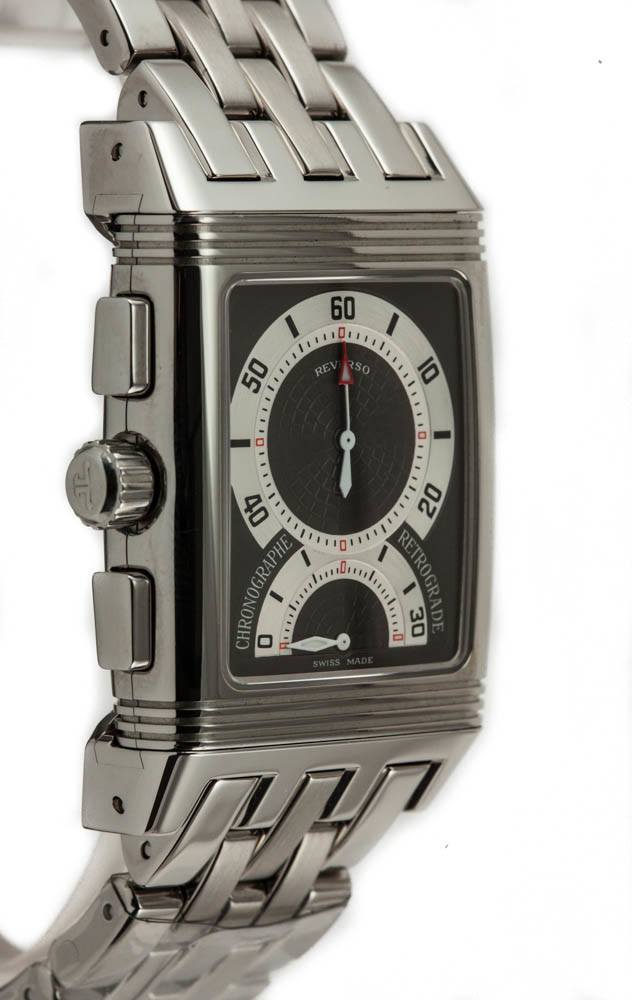IWC Aquatimer Chronograph 3719: Timeless Appeal, Future Classic
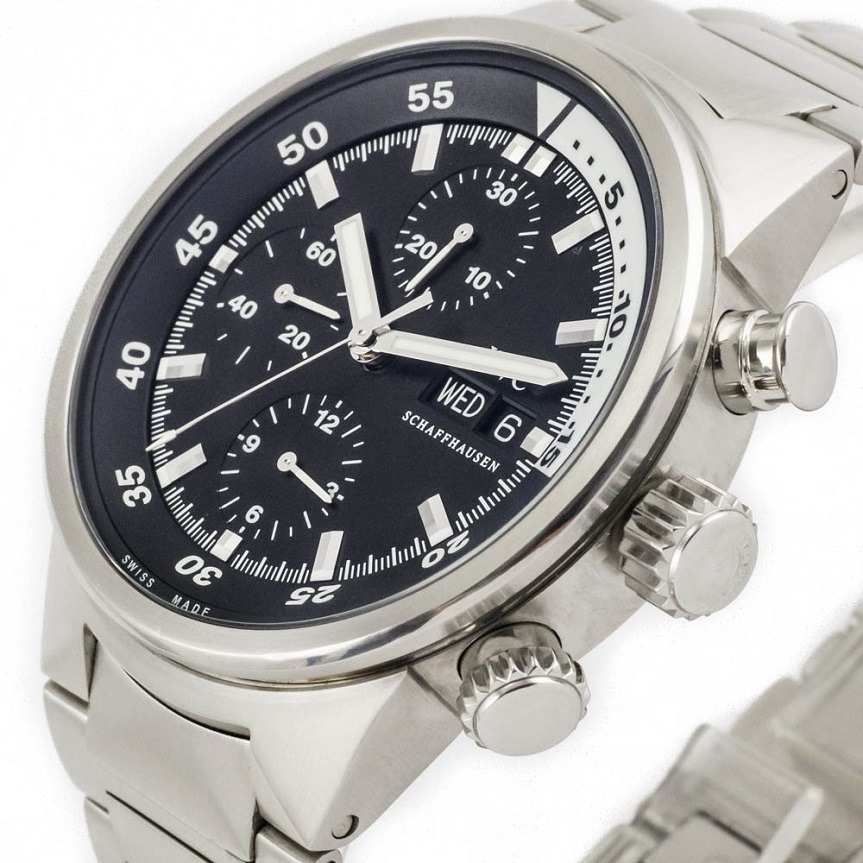
Vintage dive watches are cool, and fine specimens of the most desirable models are priced accordingly. And then there’s the question of authentication – a necessary ordeal that can sap the fun factor from vintage collecting. But a late model IWC Aquatimer Chronograph 3719 captures the honest appeal of classic tool watches, and it comes in a contemporary package at a bargain price. The first-ever IWC Aquatimer Chronograph launched in 2005 with the 3719 reference. By the time its production run ended in 2009, the watch was being hailed as a modern classic.
The folks in Schaffhausen knocked this one out of the park. Each variant of the 3719 chronograph dial manages to combine the one-glance legibility of the best dive watches with an arsenal of useful complications. IWC’s Aquatimer chronograph offers users the everyday convenience of a day/date display, and the rotating bezel can be used to time a second short interval whether diving or cooking eggs. This is a practical watch for desk divers and treasure hunters alike.
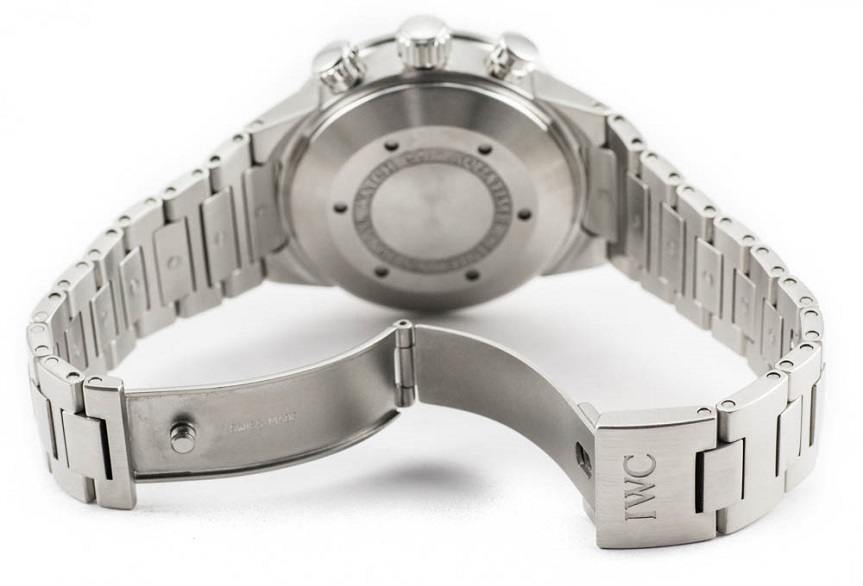
Even better, the watch embodies a great deal of the engineer’s intuition for practical innovations that made yesterday’s IWC an icon among fans of robust tool watches. The most obvious departure from dive watch convention is that unidirectional bezel; it’s an internal piece that cannot move by accident. When purchased on a bracelet, the 3719 offers one of the finest sizing systems offered by any watch designed before or since. The entire bracelet features center-links with individual push buttons that permit link-by-link tailoring to the user’s wrist.
While IWC’s interest in unconventional safety bezels and modular bracelets is well established (and ongoing), the mechanical refinements of the 3719 are just as thoughtful. IWC employs a variant of the workhorse Valjoux/ETA 7750 chronograph caliber, but this one has been hot-rodded with a Triovis micro-adjuster built for IWC. The watchmakers at IWC selected the Triovis over ETA’s stock system due to the “Trio’s” better shock resistance. Although not a “manufacture” movement, IWC does grace the 7750 – dubbed the 79320 in this application – with a proprietary finish and aesthetic treatment. When designing a luxury watch, small considerations like these add both practical value and soul to the finished product.
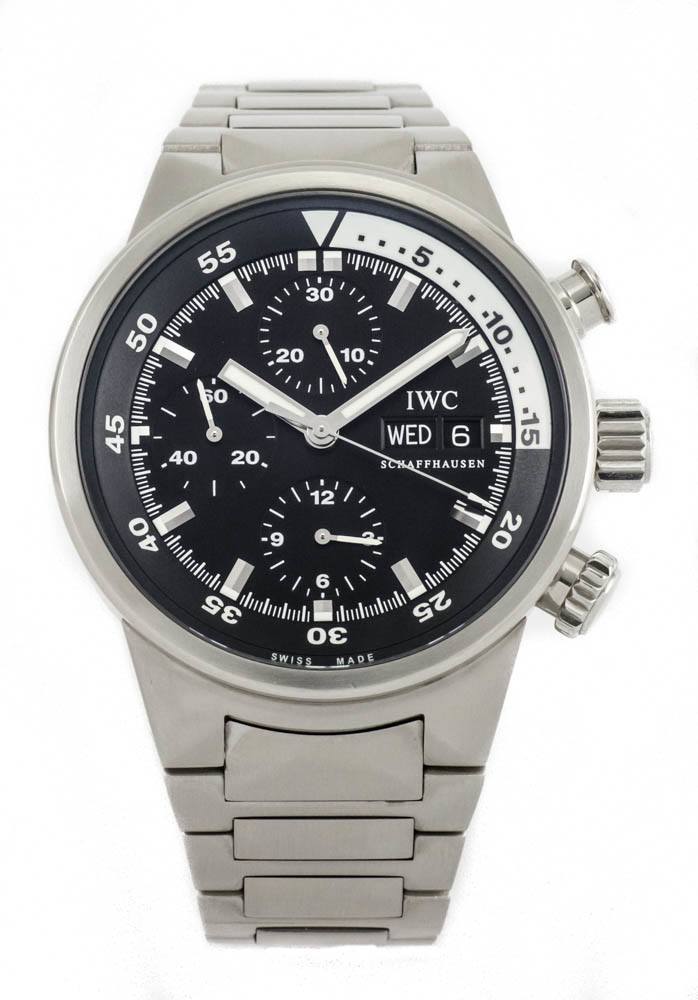
The 3719’s keys to success were a judicious blend of modern proportions, innovative thinking, and style that paid deference to IWC’s first dive watch, the 1967 Aquatimer. But whereas that 37mm model is petite, scarce, and priced to match, the preowned 3719 can be obtained in titanium or stainless steel for only $3,500-$5,000 with a comprehensive IWC boxed set. While there appears to be little pricing distinction between steel and titanium at the moment, watches on bracelets will command prices on the higher end of the scale.
Several special editions of the 3719 were issued, but the essential variants of the 3719 include the stainless and titanium versions on bracelets or rubber straps. And its handsome throwback lines sport modern 42mm proportions. While IWC’s first Aquatimer chronograph does justice to its vintage inspiration, the larger watch’s wrist presence is very much of the twenty-first century.
Audemars Piguet Royal Oak 14790 Midsize: Premium Pedigree, Bargain Basement Price
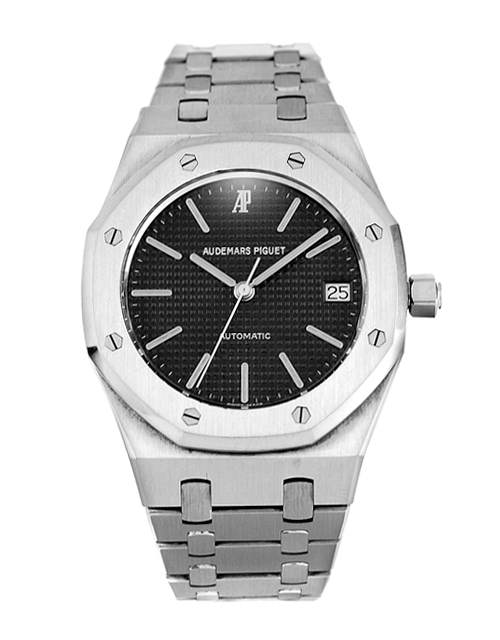
The Audemars Piguet Royal Oak is an icon and institution within the watch world. Its pull is magnetic, and its charisma is undeniable. Living legends like the Royal Oak inspire rank-and-file watch lovers to save for years in pursuit of their bolted-bezel dreams. And thanks to the long-running midsize 36mm Audemars Piguet Royal Oak 14790, that dream can come true sooner and cheaper than many imagined.
All of the key elements of Gerald Genta’s original Royal Oak are present and correct. As envisioned by the Master himself, a Royal Oak is defined by its bezel, its dial, and seamless integration of an intricately finished case and bracelet. The 14790 checks every box.
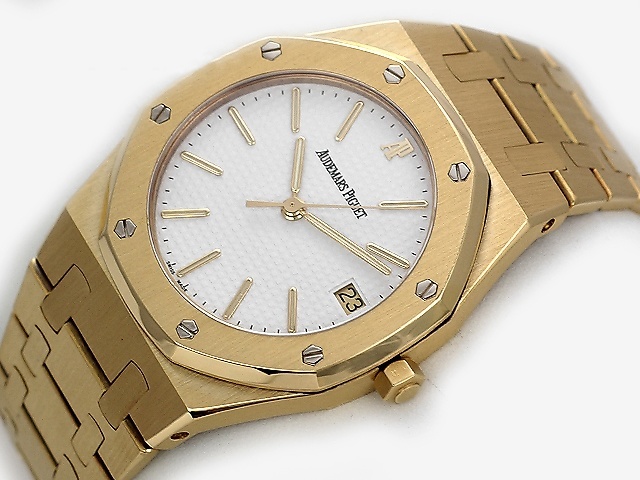
Ask a jeweler or professional watch case polisher to name the most challenging watches to refinish, and the Royal Oak is guaranteed to feature near the very top of the list. Royal Oaks were designed in steel, a base metal, but Genta ennobled the material with a complex array of finishes and facets that allowed the “acier inox” to transcend its blue-collar origins. The signature octagonal bezel and inset white gold bolts are unmistakable. These watches draw their power not from size or complications, but from the innumerable subtleties of the bracelet, bezel, and case. A 14790 mid-size harnesses all three to great effect. AP aficionados looking for an authentic Royal Oak experience need look no farther.
The dial of the Royal Oak 14790 captures the same essential aesthetic of its 39mm counterpart. With a waffle-like “tapisserie” pattern cut on a pantograph apparatus at traditional supplier Stern Creations (yes, those Sterns), the 14790 features the same visual signature and craft content of the famed “Jumbo.”

Regarding size, neither the original 39mm nor the 36mm 14790 are in step with the high end of modern proportions. But the 14790 shares its larger predecessor’s habit of wearing larger than its nominal measurements. The characteristic flare of the Royal Oak’s integrated lugs and bracelet means that the 36mm 14790 wears in a fashion akin to a 40mm Rolex in look and feel. With a full steel bracelet to add mass and wrist presence, the 14790 does not read as a small watch; it reads as a Royal Oak.
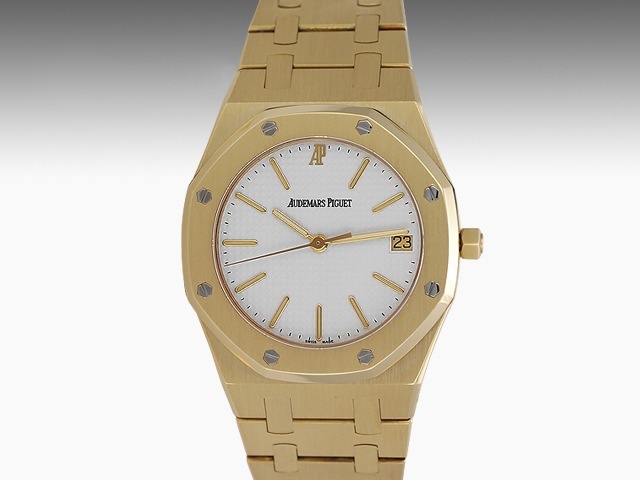
Even the “engine” beneath the hood of the Royal Oak 14790 continues the model line’s early tradition of employing Jaeger-LeCoultre base calibers. In the case of the first 39mm “Jumbo,” motive power was provided by the thin JLC caliber 920 doing business as the AP cal. 2121; the 14790 utilizes a robust AP cal. 2225 (later 2325) based on the JLC 889. Until 2000, Audemars Piguet owned 40% of JLC, and much of the later development work on these movements was a collaborative effort.
Selection is a strong point of the Royal Oak 14790. The watch was produced for parts of three decades before its discontinuation in the late 2000s, and many variants exist. Classical stainless models with dark dials and stick indexes are readily available, but those with a penchant for novelty and treasure hunting will be tantalized by the prospect of precious metal, mixed metal, full-tantalum, and exotic dials that were produced during the watch’s long run. An extraordinary “Military Dial” variant exists with a smooth dial, full Arabic numerals, sword hands, and luminescence that glows like a blowtorch at night. It’s unique among Royal Oaks and commands a small but passionate following.
Persistent mid-size skeptics must consider the value proposition. Preowned prices for discontinued 39mm Royal Oak 5402 (and all steel Jumbo references, really) and 15300 models start in the low five-figure range and climb steadily upward. By contrast, the 14790 in stainless steel offers admission to the Royal Oak fraternity and Swiss watch “Holy Trinity” (with Patek and Vacheron) for prices that start at roughly $6,000 for a solid, unpolished “daily driver.”
The Golden Rule: Buy It Because You Love It
Late model watches offer far more than depressed prices. Modern technology and depreciation mean that late-model watches are far less attractive to the cottage industry of counterfeiters who prey on the vintage scene. Forging one of six (or is it seven? or eight?) Rolex “Red Sub” dials is a mild challenge to skilled hands; creating a fake and functional vertical trigger chronograph like the Jaeger-LeCoultre Amvox2 is nearly impossible.
Moreover, the use of synthetic oils, computer-assisted design, movements designed with daily use in mind, technologies like silicon hairsprings and ceramic rotor bearings mean that today’s watches are built heartier than many of the classics of online forum folklore. Just like late-model modern cars, late-model preowned watches incorporate measures that insulate them against many of the problems inherent in true vintage examples. Nobody worries about rust and “coked” cylinder heads when shopping for 2004 Corvettes, and, by the same token, fragile non-shock protected escapements are almost unheard of in modern mechanical watches.
Value is a matter of getting a great deal of what a person wants in a watch for a relatively low cost to the buyer. Variety, modern sizes, contemporary watchmaking technologies, complications, and yes, undiscovered future classics, rank among the strengths of the current preowned late model watch market. Don’t buy these watches because you believe there’s a fortune to be made. In the future, certain of today’s “used models” will drop gavels to roars of applause, but that’s not the reason to seek them today.
Instead, envision a Mopar diehard in his driveway, circa 1989, wrenching under the hood of a “Plum Crazy” Purple 1968 Dodge Charger R/T 440-6. He bought it because it was fast, because it was cool to him, and because it flew far under the radar of speculators then bidding Ferrari GTOs into the eight-figure range. In the days before theatrical televised auto auctions, that dude owed the Charger because he loved it. Seek undiscovered gems among late model watches with that ideal in mind.
Tim Mosso is the Horology Officer and Product Specialist at watchuwant.com of Fort Lauderdale, Florida.
